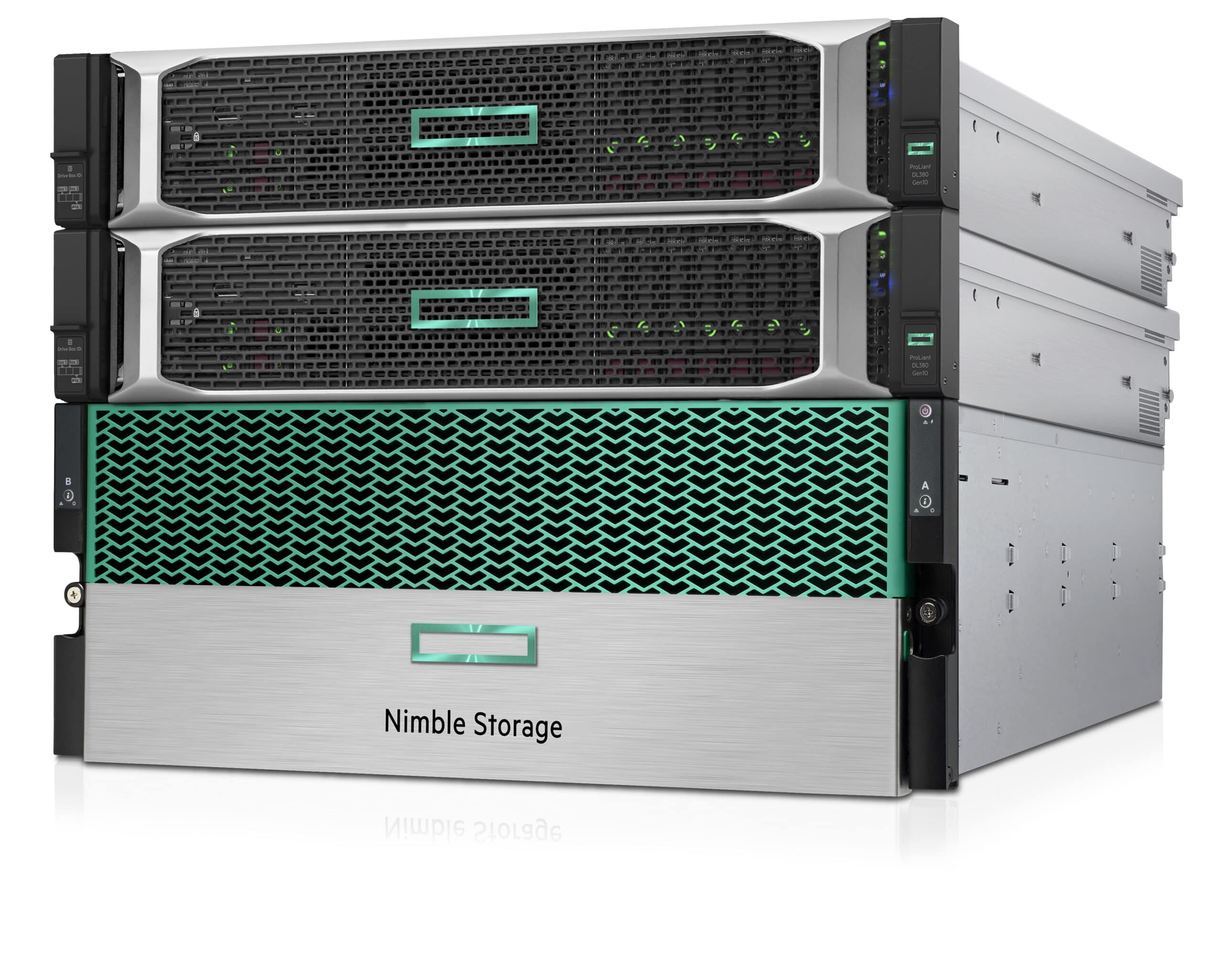If you’re looking for a shared storage device you’re likely curious about their benefits.
As a vendor of shared storage devices, here at the KR Group, two of the brands we recommend to our customers are Pure Storage and Nimble Storage.
You can boil our stance down to four benefits the two devices share:
- Pure and Nimble offer ease of management.
- Pure and Nimble provide great support.
- Pure’s and Nimble’s shared storage devices have 99.9999% or “six nines” of uptime.
- Pure and Nimble shared storage appliances offer great deduplication and compression.
These four characteristics make either option a great choice for your shared storage needs.
1. Pure and Nimble offer ease of management.
For the most part, you won’t have to actively think about what your Pure and Nimble shared storage devices are doing.
Whether you choose an all-flash disk model from Pure’s X series or Nimble’s AF series, or a hybrid disk model from Nimble’s HF series, the device will operate on its own and without many problems.
In the rare cases when you do encounter a problem with your Pure or Nimble storage device, the arrays typically have gathered all the information they need about your equipment to solve the problem.
The arrays that process your data are designed to be in constant, secure communication with their respective vendors, so the engineer at Pure or Nimble typically has all the information they need without having to ask for anything.
Pure Storage: Evergreen Storage makes migrations easy
Pure helps manage your migrations, too.

When you upgrade to a different Pure shared storage appliance and have Evergreen Storage, Pure migrates all the information from your current array to your new one. This is all done in the background and doesn’t affect performance.
Nimble Storage: Infosight technology helps identify problems
Nimble’s stand-out ease of management feature is HPE’s Infosight technology, which comes with all Nimble storage devices.
This feature analyzes data about your data and can help pinpoint problems with your shared storage devices, as well as other devices in your IT stack.
Many of the support tickets Nimble users generated are from problems Infosight identified on other devices.
2. Pure and Nimble provide great support.
It’s not very often you’ll need assistance with your Pure or Nimble shared storage device, but if you do, both companies offer great support.
Not only do both vendors already know what is going on with your array, but when you reach out to a Pure or Nimble engineer, you’ll talk to at least a tier-two engineer.
Compared to tier-one engineers, they have more knowledge and a broader skillset to solve your problems.
A tier-one engineer could offer basic support and troubleshooting. However, they would have to escalate more technical problems to a tier-two or higher engineer.
Pure and Nimble shorten the problem lifecycle by initially connecting you with an engineer who has the basic troubleshooting knowledge, as well as the skills to address the more technical details of a problem within your storage array.
Pure Storage: Evergreen includes migration support
Additionally, Pure’s ongoing maintenance program (Evergreen) provides background support for migrations and will transfer your information from your current array to your new one without you noticing.
Nimble Storage: Infosight provides holistic support

Nimble’s stand-out support feature is its Infosight technology, which can help identify problems elsewhere in your IT environment. Many of the support tickets their users generate are about problems outside of the shared storage appliance.
If you want more information about either device, Pure’s website and Nimble’s website are full of information.
As an added bonus, you can search for issues you might have on each site’s support center.
3. Pure’s and Nimble’s storage devices have six nines of uptime.
In terms of monthly uptime, Pure and Nimble boast about their six nines of monthly uptime. This means the shared storage appliances are virtually always up and running.
With 99.9999% uptime, Pure and Nimble offer more availability than most people experience on the public cloud.
In the world of IT, having as close to no downtime is key, because time offline can be detrimental for businesses.
If you’re only 99%, it means you’re experiencing almost seven and a half hours of downtime every month – that’s almost an entire workday.
For businesses that rely on their shared storage devices for a multitude of electronic fund transfers, that amount of downtime means lost business and money.
4. Pure and Nimble shared storage appliances offer great deduplication and compression.
To make the most of the space you purchase on your shared storage device, Pure and Nimble provide top-notch deduplication and compression processes.
Deduplication is when your device saves only one copy of redundant data blocks. By eliminating redundant files, it saves room on your storage array.
Compression is the ability of your appliance (in this case storage) to reduce the amount of space needed to store data of a certain reported size.
Deduplication and compression are important because they help reduce the total cost of ownership of your shared storage appliance.
Think of it as packing a suitcase. You need to make the most of your small space, so you’re going to vacuum pack bulky items (compression) and only pack one pair of shoes instead of three (deduplication).
By reducing the space used, you can ultimately pack more into your suitcase or shared storage device.
How to choose between Pure and Nimble
With so many similarities, it can be hard to determine if a Pure or Nimble shared storage appliance would be a better fit for you.
They both offer ease of management and great support and up-time, and you can make the most of your Pure or Nimble device with compression and deduplication.
They do have their differences, though, which often makes one a more desirable option for your specific needs.
To help guide you toward the right shared storage device for your business, we’ve created this free, downloadable cheat sheet.


